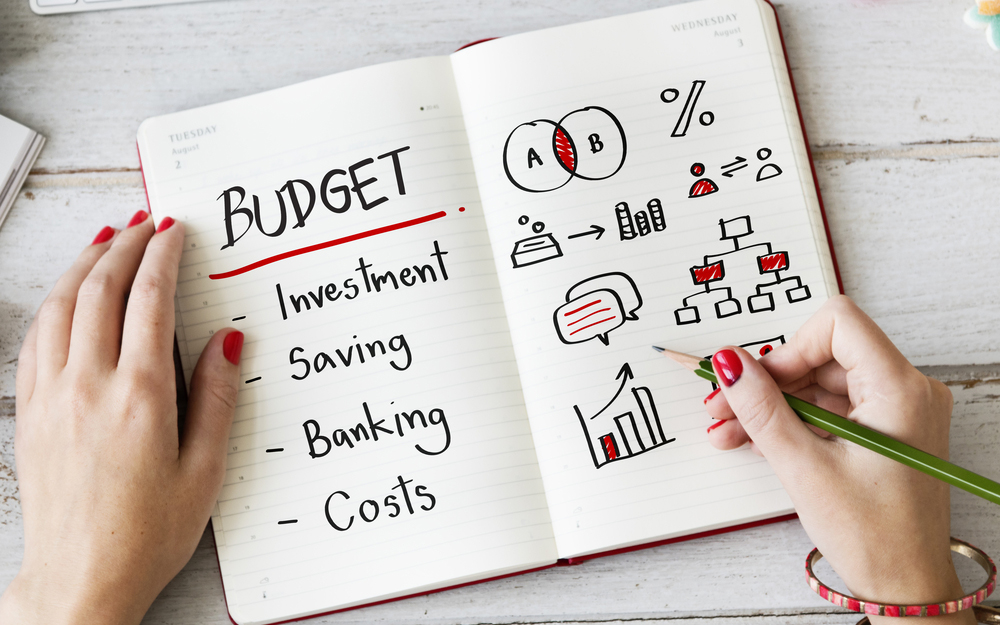Table of Contents
Have you made a budget for yourself yet?
Budget is a tricky word. Our brains associate it with restrictions as opposed to seeing it for what it really is: a tool to understand how you spend your money. In the simplest form, it’s a summary of your income and expenses. Budgets aren’t about tightening your wallet, they are about understanding your finances.
Where does your money come from? Where does your money go? I feel like I ask myself that last question all of the time. Having a monthly budget will make it easier to understand and track your spending habits. So the next time you ask yourself where all your money went, you’ll have the answer.
With unemployment in the US at an all time high, it’s more vital than ever to have a solid foundation for your finances. The good news is that budgets don’t have to be complicated. You can create a budget sheet at home without an expert by following a few basic steps.
Why You Need a Personal Budget
Even if spending and saving aren’t issues for you, a budget is still a great tool to help you cut unnecessary costs. Setting up a summary of your expected income and expenses allows you to save even more money because you are able to physically see your spending patterns.
With the amount of bills and automated payments everyone has, it’s easy to look over the things that you don’t really need. Maybe you pay for five streaming services but only really use one. By creating a budget sheet, you can minimize these expenses, and pave the way to reach your financial goals.
Create a Budget Sheet in 5 Steps
Everyone has their interpretation of what a perfect budget looks like, but truthfully it is up to you to decide what works for you.
Upon reading guide after guide, it becomes clear that all of the steps to creating a budget are relatively the same. Before you start, figure out how you want to record your budget. Typically people use spreadsheets and set up their budgets to reflect their monthly spending. There are free templates you can use to input information or you can start with a basic spreadsheet and adjust the formatting as you move forward.

Step 1: Gather all of your financial information
We are talking bank statements, paystubs, utility bills, insurance bills – basically any documentation you can find where you are either spending money or making money. A lot of this information probably lives online as well.
Step 2: Add up your income
The first part of a budget is knowing how much you make. It’s easiest to break down your budget into monthly increments. So, you need to know how much money you take in every month. When recording this number, focus on the net pay, after taxes.
Step 3: Add up your expenses
After you figure out how much you make, you need to know how much you are spending. Check the documents you’ve gathered and your credit card statements to record monthly expenses.
You can separate these expenses into fixed payments that do not change month to month, like rent, and variable payments that change based on your needs, like grocery shopping. As you start to keep a record of these payments, you can estimate how much you’re spending on the variable costs each month, by averaging them out. For example, although your grocery receipts each have a different total, you may find that you spend about $300 a month on food in general.
Don’t forget to include annual payments and automatic deductions in your summary.
Step 4: Calculate your savings
Once you have averaged out your monthly income and expenses, now you can figure out how much you’re saving. To do this, simply subtract your expenses from your income. Ideally, you are left with money at the end of each month that you can then allocate into savings or future investments.
Step 5: Review and adjust your budget
If you did step 4 and came up with a negative number, now is the time to adjust your spending habits. This completed budget summary will make it easy to figure out where you can cut costs and what you should prioritize. You can also choose to follow a budget method, like the 50/30/20 method, that will set you up with an efficient way to save.
At the end of the month, you want all of your money to have a place so that your budget is balanced. The money left over after subtracting your expenses should be allocated into their own spending categories, like an emergency fund or savings for a specific goal.
Budgets Aren’t a One Time Only Thing
Creating a budget summary is a great start, but to truly be successful, you need to continue tracking your spending and income. Once you have a template in place, you can easily plug in the numbers every month and reassess. There are also tons of apps that will track your budget for you and help you visualize your spending habits.
Budgets aren’t bad, and they don’t have to be restrictive. In fact, creating a monthly budget will give you more freedom in spending and saving. When you understand your finances, you will be able to set goals and easily achieve them.
Save even more money every month by buying products and gifts on RebateKey. Not only will you receive products you love, but you will also get a rebate back of up to 100% the original price! Don’t wait, sign up for RebateKey today and start saving.




